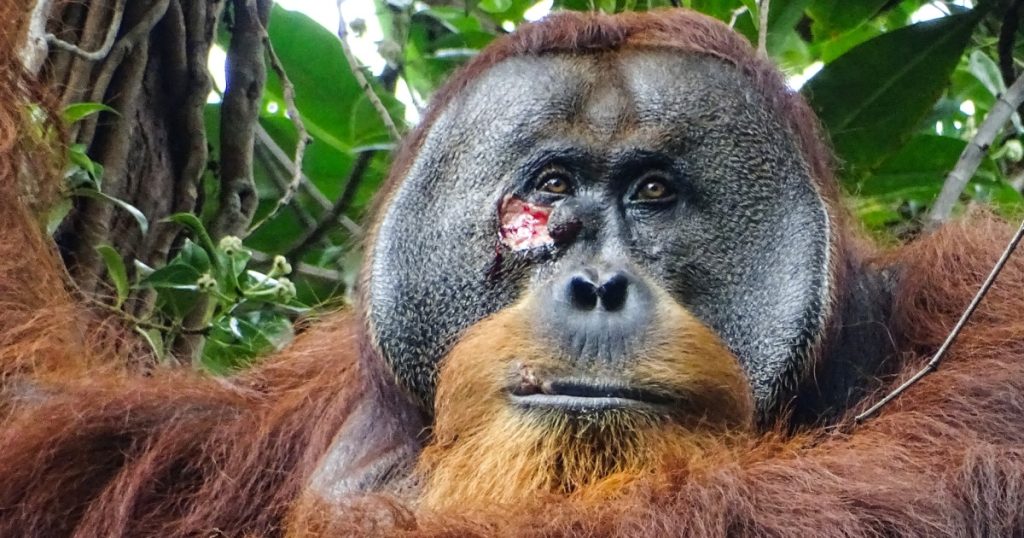Researchers have discovered evidence that orangutans are able to identify and use pain-relieving plants to treat wounds, offering new insights into the self-medication abilities of great apes. The discovery was made in a protected area of rainforest in Indonesia, where orangutans have been observed since 1994. Orangutans, like Rakus, a resident or frequent visitor to the area, were never before seen self-medicating until this discovery. Scientists believe Rakus may have learned this behavior through individual innovation or culturally from other orangutans early in life.
The ability of orangutans to self-medicate might be traced back to a shared ancestor with humans, as they develop sophisticated knowledge of foods and have been known to use tools. Researchers theorize that animals, including chimpanzees and insects, self-medicate to treat or prevent parasites. Evidence of animal self-medication has been mounting in recent decades, with Jane Goodall and other researchers documenting examples of animals using plants to address health issues. Michael Huffman, an associate professor at the Wildlife Research Center at Kyoto University, believes that humans might have learned about medicinal plants from observing and interacting with animals.
The new findings, in a species genetically similar to humans, offer valuable insights into the behavior of ancient primates and the development of self-medication abilities. Orangutans, considered critically endangered, inhabit vanishing rainforests in Sumatra facing threats from agriculture conversion and wildfires intensified by climate change. Understanding the self-medication abilities of orangutans and other animal species can provide valuable information on the importance of biodiversity and natural habitats. The discovery of orangutans self-medicating highlights the need for conservation efforts and protections to ensure the survival of these intelligent and resourceful creatures.
The research team’s findings demonstrate the intricate knowledge and capabilities of orangutans, including their ability to use medicinal plants to treat health issues. Orangutans acquire extensive knowledge of foods and have been observed using tools, indicating a high level of intelligence similar to humans. By studying these behaviors in orangutans, researchers can gain valuable insights into the evolutionary development of self-medication abilities and the importance of biodiversity in natural ecosystems. The discovery of Rakus self-medicating provides a rare glimpse into the intricate behaviors and survival strategies of orangutans living in the rainforests of Indonesia.
The shared ancestor of humans and great apes may have passed down the ability to identify medicinal plants and substances from animals, suggesting a close connection between humans and nature. Observations of animal self-medication behaviors have inspired human medicine practices and the development of herbal remedies. Research into the self-medication abilities of animals, including orangutans, chimpanzees, and insects, continues to provide valuable insights into the complex relationship between humans and the natural world. By studying and learning from animal behaviors, humans can gain a deeper understanding of the importance of biodiversity and conservation efforts to protect endangered species like orangutans.
The study of orangutans self-medicating offers a unique opportunity to learn from the behaviors and capabilities of these intelligent creatures in their natural habitats. The dwindling population of Sumatran orangutans highlights the urgent need for conservation efforts to protect these critically endangered species and their rainforest habitats. By recognizing the resourcefulness and adaptability of orangutans, researchers and conservationists can work towards safeguarding their survival and preserving the biodiversity of tropical rainforests. The self-medication abilities of orangutans provide a fascinating glimpse into the intricate behaviors and survival strategies of these incredible creatures, shedding light on the interconnectedness of all living beings in the natural world.













